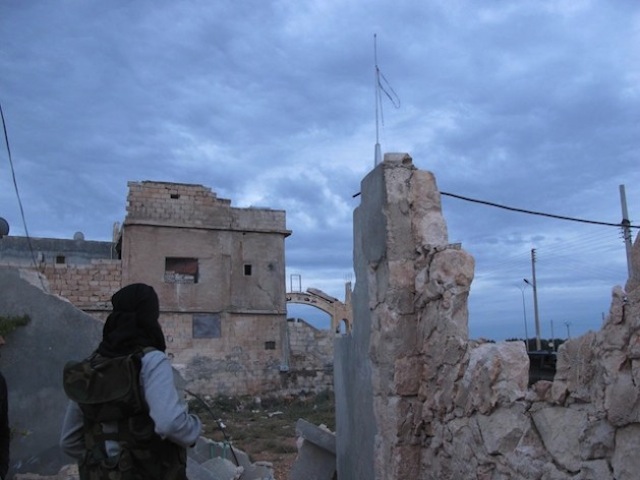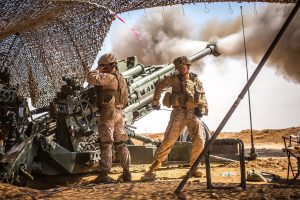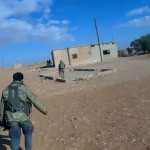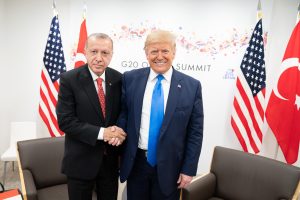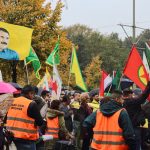The sheer magnitude of death and destruction from the ongoing struggle between the Assad regime and the opposition is already defining the nature of the aftermath. The longer the fighting lasts, the greater will be the militancy of the opposition and its bitterness toward supportive quarters of the international community for not doing far more. Even if the fighting were to stop today, Syria would be left a devastated, impoverished nation with little in the way of financial reserves, roiling political and sectarian divisions, and facing an international community unable to provide abundant aid for recovery.
Cloaked in a speech purportedly about a settlement, President Bashar al-Assad urged his remaining base to redouble its efforts to crush the formidable opposition during his January 6 address. Yet it’s the airpower and heavy artillery he employs daily against the rebels that’s made the biggest contribution to the ongoing rubblization of Syria’s urban centers and infrastructure. Already, substantial portions of Aleppo, Homs and Hama have been wrecked; sections of the greater Damascus area have been devastated similarly. This wide-ranging destruction encompasses all manner of basic infrastructure; government, commercial and private property; historic tourist venues; medical establishments; and a host of poorer, more densely populated districts.
Even by last April, Syria’s foreign currency reserves were reportedly down by half. Not only has Assad’s war against the opposition consumed a great amount of public treasure; the Syrian economy has also been crippled by unrest and damage.
Meanwhile, tactics like turning loose “Shabiha” paramilitary units (a ruthless, corrupt, and mostly Alawi militia with origins dating back to the 1980’s) in bloody sweeps of neighborhoods and villages against rebels — and their families — has further intensified the sectarian slant of the fighting. What descended into open anti-Sunni violence in numerous cases doubtless gave added impetus to Sunni extremists organizing themselves within Syria, or elements like anti-Shi’a, anti-Alawi “al-Qaeda in Iraq” cadres crossing the border to join the rebels. Thus, tough extremist groups like “Jabhat al-Nusra” have been assuming a greater role in many anti-regime battles.
Assad rails on about rebel “terrorists”, but to the extent that is true, he played a major role in provoking them against him in rising numbers.
Yet, whether intentional or not, the radicalization of many rebels stemming from Bashar’s brutality and the prolongation of this bruising struggle has created one salient advantage for the regime. Both the West and sympathetic moderate Arab regimes remain reluctant to provide large amounts of munitions (and the most critical arms: anti-aircraft missiles) to the rebels. For the opposition, this handicap appears to have grown more serious. Recent reports from rebels inside Syria allege that outside arms supplies have come to a halt. The NPR’s Deborah Amos reported on Jan. 4 that after having spent time inside Syria, the flow of foreign arms had “slowed…almost to a full stop.”
Since last week, the government appears to have been on the offensive in some areas, hammering away at rebel holdings, probably because Assad & Co. are attempting to capitalize on the shortage of rebel munitions. Indeed, Bashar’s vigorous performance on Jan. 6 might well have been driven by a personal belief that his government could be on the rebound.
While the regime’s survival is still unlikely, the stalling of recent rebel offensives could buy it more time. The reportedly widespread opposition view linking the slackening in vital international support to the rebels’ military problems has generated deep resentment — especially since this decline came so soon after the opposition complied with Western and moderate Arab pressure to launch an ostensibly more united opposition council in exile.
All told, these developments have been casting an ever darker shadow over post-Assad Syria. National recovery will be slow and halting under the best of circumstances. A bitter legacy of sectarian violence and reprisals can hardly be expected to end with the fall of the Assad regime (particularly if certain pro-regime diehards fall back to sectarian strongholds to prolong their resistance). Establishing and maintaining coherent political authority will likely be a rocky venture resulting from a certain degree of falling out among various rebel factions, as well as the probable inability of any government to satisfy expectations of a return to normalcy among millions of Syrians scarred one way or another by the fighting.
Finally, militant Islam will almost certainly play a role in the politics of a new Syria. Any successor regime is also bound to be somewhat wary of the opposition’s erstwhile foreign “allies”, whom they believe failed to play a militarily decisive role –even indirectly — in helping to bring down the Assads sooner. Such resentment could be magnified by the inability of struggling Western economies to proffer enough assistance to accelerate substantially the agonizing rebuilding process.
Photo: A member of the Free Syrian Army at the entrance to Sarmeen. Credit: Shelly Kittleson/IPS.

